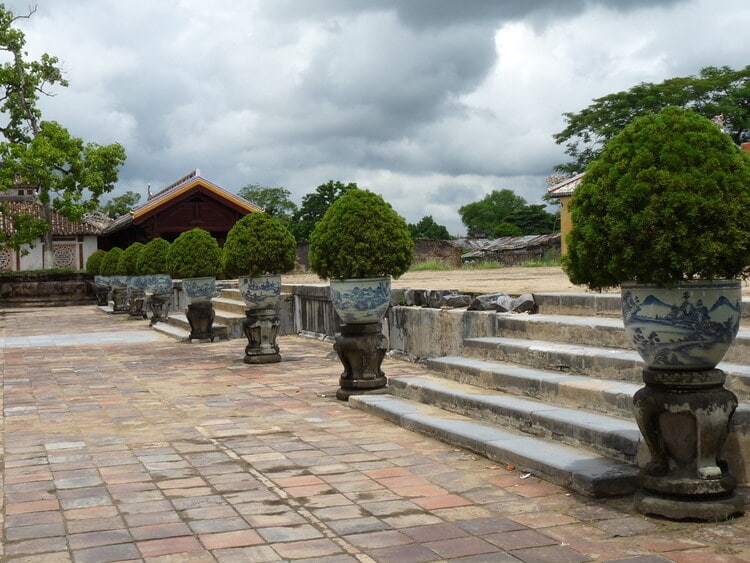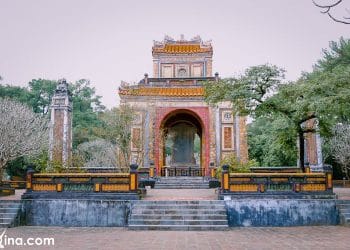Hue is famed for many famous destinations which allure history lovers and tourists nation-wide and internationally as well; typically, palaces, imperial tombs and temples. Among renowned places, Can Chanh Palace is popularly regarded as the most charming wooden architecture in Hue ancient city.
Location:
Belonging to the Forbidden City (in Huế), Cần Chánh Palace was the place where the king held a court, received envoys and organized the feast of the royal family and court of Nguyen Dynasty. It is now just the ruin because of destruction in 1947.
History Of Can Chanh Palace:

Cần Chánh palace was built in the 3rd year of Emperor Gia Long (1804). It was the most beautiful and most massive wooden structure in the Forbidden City. The palace was in restoration in 1827,1850, 1899 and was repaired by Khai Dinh King at the beginning of the 20th century. During the period of Indochina war, Can Chanh palace was on fire and severely damaged in 1947. Can Chanh palace now remains the foundation and some pieces of stone. As a result, preservation centre of Hue ancient capital’s monuments and research institute of world heritage, Waseda University (Japan) planned to restore Can Chanh palace.
Architecture:
Can Chanh Palace was placed on the main axis (“Dũng đạo” line ) of the citadel–lying between Thai Hoa Palace (for holding the court) and Càn Thành Palace (King’s accommodation). In front of the Can Chanh Palace was “Sân bãi mạng” where mandarins gathered before taking part in the court. The palace and the house of military mandarins (hữu vu) and the house of civil mandarins (tả vu) were in a union with the “môn” word style.
The foundation was about one meter high; the curb was made by wooden-hammer brick with the area of 1000m2. The main hall had five bays and 2 double wings; the front palace consisted of 7 bays and 2 single wings. In both the north and south, there were 4 lobbies and five bays connecting through Văn Minh palace, Võ Hiển palace and across Tả Vu, Hữu Vu. The wooden frame included 800 iron wooden pillars; and most of the upper frame like lean-tos, purlins was meticulously and skillfully sculptured. Inside the palace, two pictures of Hue’s beauty and maps of provinces in glass frame were placed at the middle bay. Can Chanh Palace was the place to show treasures of Nguyen Dynasty such as Chinese pottery and ceramic, magnificent paintings.
Function Of Can Chanh Palace:

Can Chanh Palace was the place where Kings worked sessions in the 5th, 10th, 20th and 25th of every month, according to the lunar calendar. Besides, the palace was used to receive the important envoys, foreign delegations and hold banquets or royal ceremonies.
Values:
Can Chanh palace treasured architectural values of fine art decorations in traditional Vietnam style. It was designed with the wooden structure and in the harmony of the layouts and embellishments. Also, Can Chanh palace played an important role in politics, royal parties and showed the power of the Nguyen Dynasty’s Kings during a hundred years of ruling.
By Tu Anh















